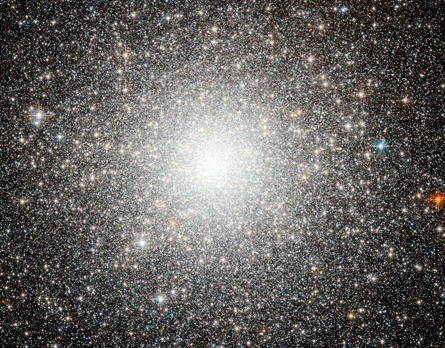The image above is the globular cluster M54, a huge ball of mostly older stars 90,000 light-years away. I thought I knew about globular clusters, but the Bad Astronomer posted two points that are entirely new to me, and very cool:
(BA) — Also among its oddities is that it harbors what’s called an intermediate mass black hole … something like 9400 times the Sun’s mass, which is still substantial! These kinds of black holes were only discovered a few years ago for the first time, and how they form is still something of a mystery. But I haven’t even mentioned the weirdest thing: M54 may be part of another galaxy! It actually sits right at the center of a dwarf galaxy called the Sagittarius Dwarf Elliptical Galaxy, a small galaxy currently being torn apart and assimilated by the Milky Way. That’s right: we’re eating it.
The only way astronomers know for a black-hole to form is in the death throes of a massive, dying star. But those objects are only a few solar masses, their gravity is no stronger from a stellar distance than the core of the star they represent. But somehow, groups of black-holes congregate at the heart of galaxies, and thanks to cosmology we know this happens very early on. Distant quasars are super-massive black-holes millions to billions of times the mass of our sun feeding on left over matter and debris. After they eat it all up, they quiet down into galactic middle age.
The fact that M54 has “mini” super massive black-hole, seemingly caught in the process of growing, demonstrates this happens in most or all large collection of stars. And when galaxies merge their respective super massive black-holes eventually meet up and combine. But how exactly any of this occurs and whyit happens so fast, is not so clear.


Leave a Reply
You must be logged in to post a comment.